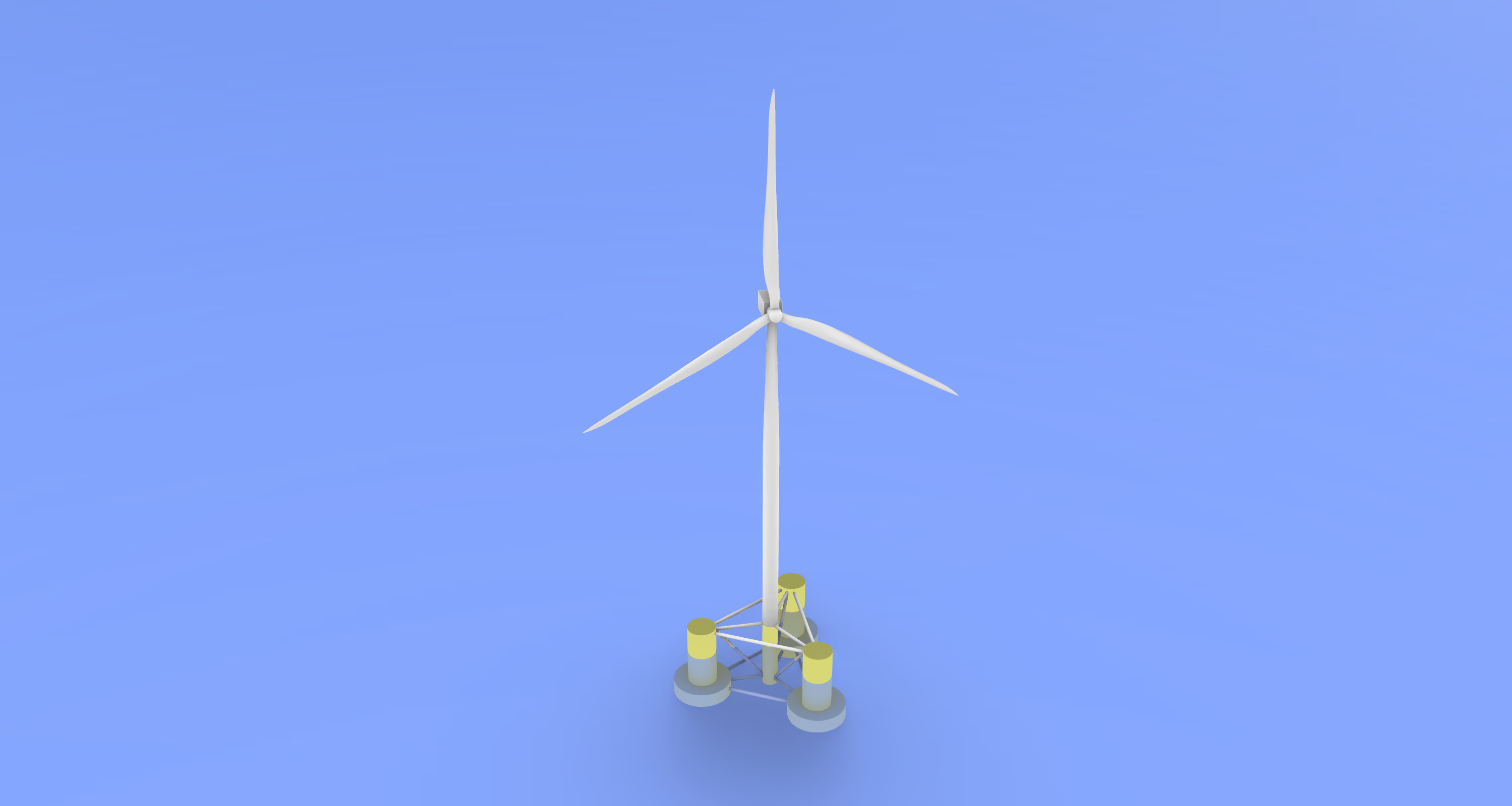
Overview
Pakistan sits on a huge, untapped maritime energy resource. We designed a concept of a 100 MW floating wind farm at Keti Bunder to show how Pakistan can turn that potential into clean power, local industry, and exportable capabilities. According to World Bank / ESMAP Technical Potential for Offshore Wind in Pakistan is ~21 GW. (World Bank)
.avif)
Site indicated by World Bank and ESMAP
Project scope & headline design choice
- Project: 100 MW floating wind farm concept (pilot-scale).
- Turbine selected (reference): IEA 3.4 MW, 130 m rotor reference turbine (RWT), used as a standard reference model for analysis and LCOE benchmarking.
- Foundation type: Floating platforms (semi-submersible platform, which can be assembled at the coast).
- Key analyses performed: site allocation, hydrostatics, structural scantlings of semi-submersible platform design and structure (DNV/ABS checks), CFD validation for the selected turbine, and Levelized Cost of Energy (LCOE) estimation.
Key technical highlights
- Use of an open, research-grade IEA reference turbine (3.4 MW, 130 m) for reproducible energy and aeroelastic modelling. (nrel.github.io)
- Structural and rule-of-thumb checks performed against DNV/ABS guidance (concept-level scantling and global strength validation).
- CFD validation of the turbine rotor was performed and validated.
- A complete concept LCOE model to assess where the project sits vs. local tariff and industrial targets.
What we do not claim (and what still needs to happen)
- This design is still at concept level, not construction-ready. Full class approval, detailed FE structural design, foundation fatigue life studies, and consenting require further iterations.
- Detailed environmental impact assessment and full stakeholder consultation are essential given Keti Bunder’s ecological sensitivity.
- Final procurement choices (exact OEM turbine, platform vendor, mooring system) will materially affect CAPEX/OPEX and thus LCOE.
Why Aqua Navtrix is the right team for this?
We brought naval architecture, CFD, Structure and systems engineering together to produce a concept that is both technically rigorous and actionable for Pakistan. This project demonstrates our ability to move from CAD → analysis → economic assessment — and to iterate toward a buildable pilot that can attract industry partners and classification endorsement.
Sources & references
- World Bank / ESMAP: Technical Potential for Offshore Wind in Pakistan — Pakistan total technical potential: ~21 GW (map indicates Keti Bunder area). View map
- IEA Task 37 / NREL reference: IEA 3.4 MW 130 RWT used as a standard baseline for aerodynamic & power-curve modelling. nrel.github.io/turbine-models/IEA_3.4MW_130_RWT